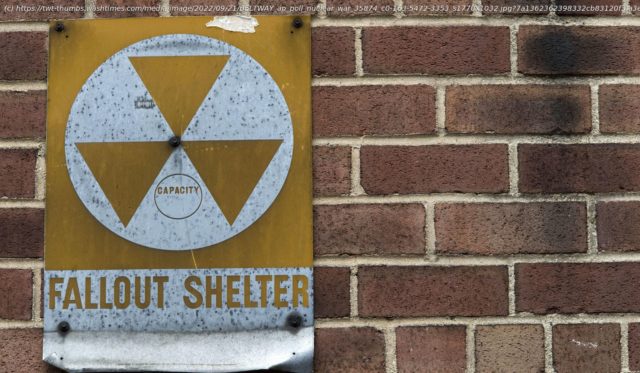Array
These are not the kind of headlines anyone wants to see. They are out there however, following Russian President Vladimir Putin’s warning Wednesday that he might resort to nuclear weapons as the situation with Ukraine grows dire. Here’s just a few from the last 24 hours:
“Putin just doubled down on his nuclear threat: What that means” (Forbes); “Putin flirts again with grim prospect of nuclear war — this time he might mean it” (The Guardian); “Biden condemns Putin’s ‘irresponsible’ nuclear threats“ (The ); “Putin escalates Ukraine war, issues nuclear threat to West” (Reuters); and “If a nuclear attack hits New York City, these fallout shelters won’t protect you” (The Gothamist).
But wait. There were similar headlines two weeks ago. Here’s just one example of many, published Sept. 3: “Russian official issues stark nuclear warning to U.S.: ‘Chess game’ of death” (Newsweek).
Then there’s this from March 15: “Putin’s nuclear threats are a wake-up call to the world.” (The Atlantic).
Let’s not forget this headline, dated Dec. 14, 2021: “Russia threatens to nuke Europe as tensions escalate” (The Daily Express).
And lest we forget, New York City issued an official PSA on July 11 detailing how to survive a nuclear attack. It urged the population to “Get inside, stay inside, and stay tuned.”
STILL CHARMED BY CASH
Those old greenbacks have yet to go out of style. Alliant Credit Union polled 2,000 U.S. adults and found that 51% have “cold hard cash” stashed away in their homes — amounting to $1,010 on average. Almost six out of 10 Americans — 58% — prefer to keep their savings in cash “just in case of an emergency.”
The survey was conducted by the Chicago-based financial cooperative Aug. 10-19 and released Monday.
Meanwhile, 29% said they find cash useful for lending money to people they know, while 17% prefer to use mobile payments and 15% opted for old-school checks. Another 43% use cash for smaller purchases like coffee while 39% reserve their cash for grooming appointments and 35% use it for small “non-critical” emergencies.
“What I think we’re seeing here isn’t that cash is dying out.






